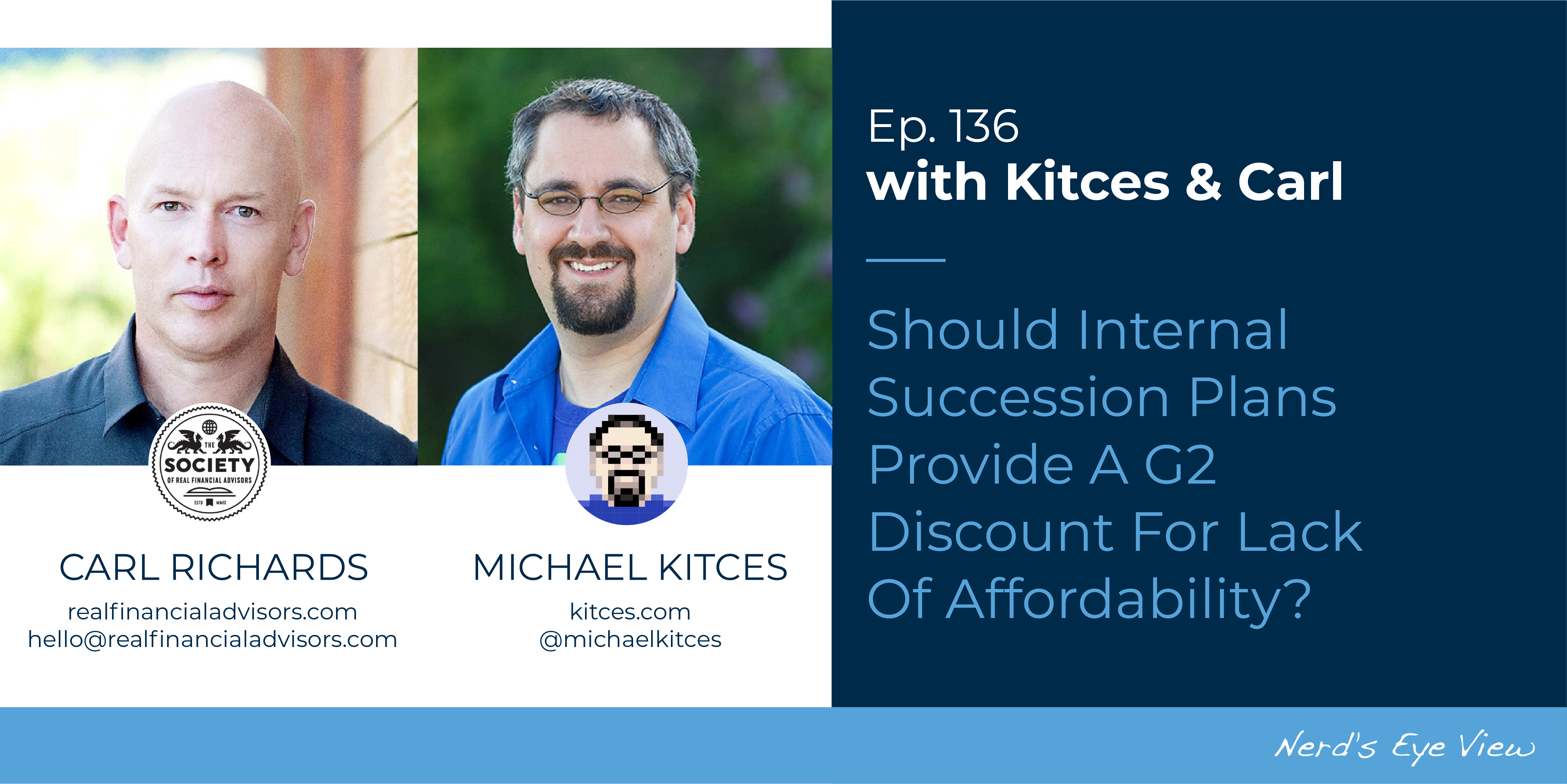For over a decade, the financial advice industry has been bracing for an “any-minute-now” tsunami of advisor retirements and concomitant sales of financial planning practices. Although that wave has yet to materialize (as many advisors may find that they’d prefer to stay engaged and earn well past the ‘traditional’ retirement age), the fact remains that, at some point, many aging advisors will have the opportunity to capture the enterprise value that they’ve spent their careers building. For many firm owners, an internal succession plan can be an attractive strategy to sell their practice, as it provides both continuity of service for clients and opportunities for the next generation of advisors to become firm owners themselves. However, younger advisors don’t typically have the same deep pockets as large ‘serial acquirer’ firms, making affordability a hurdle that both buyer and seller must navigate. Which begs the question, to what extent should an advisory firm owner discount the sale price of their firm for a next-gen successor?
In our 136th episode of Kitces & Carl, Michael Kitces and client communication expert Carl Richards explore the extent to which a firm owner might consider selling their practice at below-market value to an internal successor, why both buyer and seller might reconsider the valuation metrics that have been common in the industry, and ways to structure an internal succession deal that can make sense for both parties.
The primary risks when selling an advisory firm are that the deal may fall through, and existing clients may choose to leave the firm. Firm owners can maximize the value from a sale by ensuring that the buyer is a “good fit”, which, if they aren’t, can have real financial consequences. In the case of an internal successor, some risk is mitigated as the next-gen advisor has likely developed a relationship with clients already and is doing a good job servicing them. And maintaining pre-existing client relationships not only lowers the overall risk of the deal, it also makes the transaction a whole lot smoother. However, while that may be worth a modest discount (say, 5% or so), offering 20%–30% below fair-market value may be unrealistic. In other words, while an owner might have preferences beyond ‘just’ getting the highest dollar amount possible, there shouldn’t be an expectation (or obligation) for the owner to offer a steep discount because the next-gen advisor can’t afford it.
On the other hand, there are times when the seller’s or buyer’s price expectations don’t align with the reality of how the firm operates. Traditionally, a standard benchmark for advisory-firm sales has been 2X annual revenue; with many firms running at an average 25%–30% profit margin, this results in 7X–8X earnings valuations. However, firms with margins outside a traditional range might result in unrealistically high earnings multiples for the buyer.
Ultimately, the key point is that advisory firm owners interested in selling their firms to next-gen advisors within their practice don’t always have to structure a deal as a high-stakes, all-or-nothing transaction. Instead, the owner can facilitate a gradual sale over multiple years, allowing the buyer to adjust to the logistics of note payments and the firm’s cash flows on a much more manageable scale, while the seller can continue to benefit from the ongoing growth in their firm’s enterprise value. And while shifting ownership in tranches over time might not feel like the optimal deal for either seller or buyer, the end result is a deal that’s fair and beneficial for both sides!


